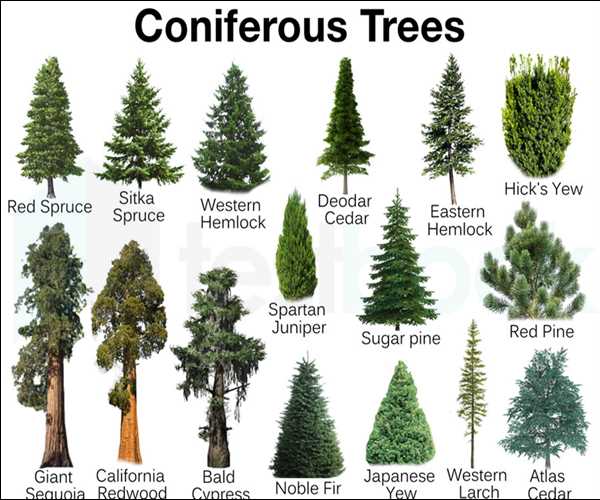In snowy regions, trees have to adapt to harsh winter conditions, including heavy snowfall, freezing temperatures, and reduced sunlight. Despite these challenges, certain tree species have evolved to thrive in these environments. Here are some types of trees commonly found in snowy regions.
- Conifers: Conifers are well-suited to snowy regions due to their needle-like leaves, which reduce moisture loss and prevent snow accumulation. They also have a conical shape that helps shed heavy snow. Common coniferous trees in snowy regions include:
a. Spruce: Spruce trees, such as the Norway spruce and Colorado spruce, are hardy and can tolerate cold temperatures and heavy snow. They have dense branches that provide shelter for wildlife.

b. Fir: Balsam fir and Fraser fir are popular in snowy regions. Their flexible branches allow them to withstand heavy snow loads, and their evergreen foliage adds beauty to the winter landscape.
c. Pine: Various pine species, such as Eastern white pine and Scots pine, are found in snowy regions. Their long needles and resinous bark help protect them from freezing temperatures.
- Deciduous Trees: While deciduous trees lose their leaves in winter, some species are adapted to snowy regions. These trees take advantage of the relatively shorter growing season to maximize their summer growth. Common deciduous trees in snowy regions include:
a. Aspen: Aspen trees are well-suited to snowy regions and have adapted to withstand freezing temperatures. They have a unique ability to reproduce through root sprouting, forming large stands of interconnected trees.
b. Paper Birch: Paper birch, also known as white birch, is a cold-tolerant tree found in snowy regions. Its distinct white bark adds visual appeal against a snowy backdrop.
- Willows and Poplars: Willows and poplars are resilient trees that thrive in snowy regions. They have the ability to tolerate wet soil conditions and their slender branches can withstand snow accumulation. Common species include:
a. Black Willow: Black willows are found in snowy regions near rivers and streams. They have flexible branches and narrow leaves that can tolerate heavy snow loads.
b. Quaking Aspen: Quaking aspens, also part of the aspen family, are known for their distinctive trembling leaves. They are often found in snowy regions and can form extensive groves.
These are just a few examples of trees that can adapt to snowy regions. Each species has unique strategies to withstand the challenges posed by snow and cold temperatures. Their ability to thrive in these conditions contributes to the ecological diversity and beauty of snowy landscapes.